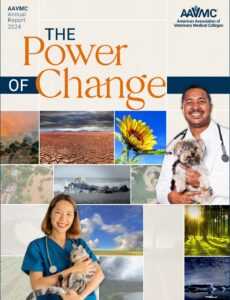Task Force Antibiotic Resistance in Production Agriculture Fact Sheet
The APLU | AAVMC Task Force on Antibiotic Resistance in Production Agriculture has completed their report. Key recommendations and steps for implementation contained in the report are summarized below.
Educational and Outreach Programs
Producers, healthcare providers and the general public require additional resources in order to effectively address antibiotic resistance. Needs include:
- A model antibiotic resistance curriculum that is adaptable for undergraduate, graduate and professional students in the animal and health sciences
- Training materials for human and animal health professionals, developed in collaboration with CDC, USDA and the FDA – such as modules for the National Veterinary Accreditation Program (NVAP)
- Educational programs for producers and farmers – developed in partnership with agricultural commodity organizations and the American Veterinary Medical Association (AVMA) – that can be delivered through the Cooperative Extension Service
- Youth-focused educational resources, developed in collaboration with groups representing the next generation of farmers and producers such as 4-H, Future Farmers of America and STEM educational groups
- Educational resources for the general public, increasing awareness of the origins and scope of the problem as well as the need for a human and animal health partnership to address it
Basic and Applied Research Programs
Interdisciplinary teams of human and animal health researchers from government, academia and the private sector should take a One Health approach. Needs include:
- Improved understanding of antibiotic resistance mechanisms – such as the transfer of resistance across species and how host immunocompetence influences the emergence of resistance
- Identification and development of alternatives to current antibiotics – this includes both new antibiotics as well as alternatives to antibiotics such as vaccines and probiotics
- Development of advanced methods and tools to strengthen One Health surveillance efforts to combat antibiotic resistance – such as methods for conducting metagenomic analyses and the development of improved diagnostic tests
- Improved understanding of the risk that antibiotic resistance patterns in animal agriculture pose to human health through modeling as well as longitudinal studies
- Improved understanding of the drivers of antibiotic use in production agriculture – including the characterization of incentives and motivations for antibiotic use across agricultural systems and sectors and the determination of best practices for disease prevention, biosecurity, management and transportation practices to reduce the need for antibiotic administration
- Assessment of federal policies to address antibiotic resistance in production agriculture – including the success and economic impact of Guidances 209 and 213 as well as the Veterinary Feed Directive on producers and consumers
Operationalizing Task Force Recommendations
In order to execute their recommendations on education, outreach and research, the Task Force established the following goals for implementation:
- Establish a program manager position and hire a manager to ensure implementation of Task Force Recommendations
- Work with APLU and AAVMC member institutions to form a national consortium of experts and researchers to execute critical studies and research recommendations
- Work with agencies, industry, non-governmental organizations and academic institutions to establish collaborative initiatives – including a series of educational workshops and leadership forums
- Advocate for Task Force recommendations with members of Congress and their staff
- Engage with international organizations including OIE, FAO, WHO, PAHO, and IICA
- Create university-based, collaborative pilot projects focusing on combating antibiotic resistance
- Create a University Research Organization (URO) leveraging public and private funding to facilitate sustained collaborative research and educational initiatives
- Work with Congress and the USDA to help resolve the important issue of the lack of access to veterinarians in many rural communities across the U.S.







SHARE